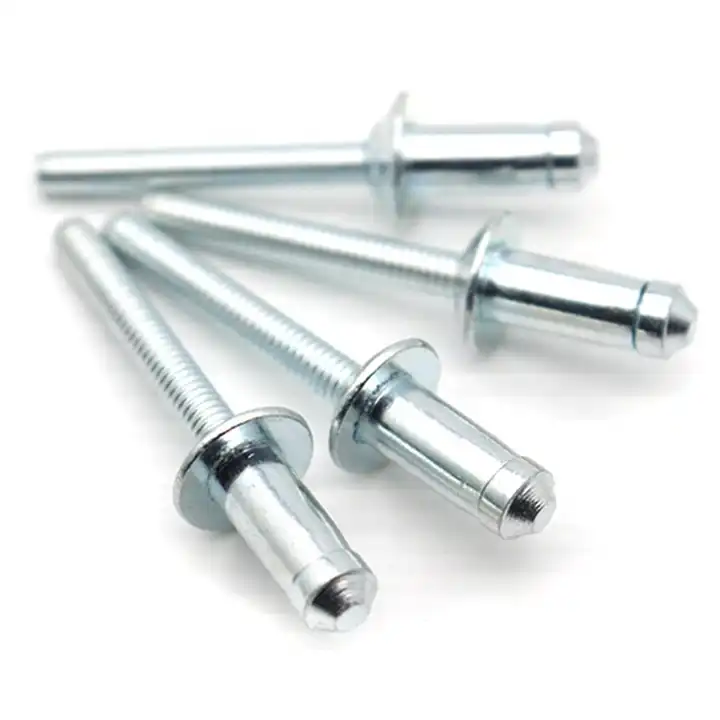Analysis of common problems and causes during the use of blind rivets
Some problems often occur during the use of blind rivets. We will conduct some simple analysis on the common problems and reasons that occur during the use of blind rivets.
1. The blind rivet was pulled through
The mandrel parts is pulled out from the rivet body as a whole, and the fracture of the mandrel parts is not broken. After riveting, a penetrating cavity is left in the rivet body. The reasons for the pull-through phenomenon are: the pulling force of the mandrel parts is too large, the diameter of the core cap of the blind rivet is too small, the material of the rivet body is too soft, and the surface of the hole in the rivet body is too lubricated.
2. Burr
After riveting, the burrs at the break of the nail core will protrude through the outside of the rivet body hole or the inside hole of the rivet body, forming burrs that can scratch your hands. The causes of burrs are: the diameter of the nail core cap is too small, the rivet body material is too soft, the diameter of the workpiece drilling is too large, the size of the rivet gun’s nozzle is too large, the distance between the nail core fracture and the nail core head is too large, exceeding Actual riveting thickness.
3. Nail head falls off:
After riveting, the nail core head cannot be wrapped and fall off from the rivet body. The causes of nail head falling off are: the diameter of the nail core cap is too large, the rivet body is short, and the riveting thickness does not match.
4. Cracked rivet body
After riveting, the rivet body will be cracked longitudinally or completely cracked. The reasons for cracking of the rivet body are: the hardness of the rivet body is too high after annealing or it has not been heat treated, the diameter of the nail core cap is too large, the content of harmful impurities in the rivet body material is too high or there is an interlayer.
5. Head jumping or insufficient drumming:
When riveting, the nail core pops out completely or the rivet body does not fully expand. The reasons for this phenomenon are: the tension control is too low when the nail core is made, the hardness of the rivet body is high (uneven annealing), and the nail core generates hydrogen embrittlement during the electroplating process.
6. Looseness after riveting:
After riveting, the rivet body becomes loose in the workpiece hole. The main reasons are: the pulling force of the nail core is too low, the hole drilled in the workpiece is too large, the hardness of the rivet body is too high, and the rivet clamping force design (material selection) is improper.

